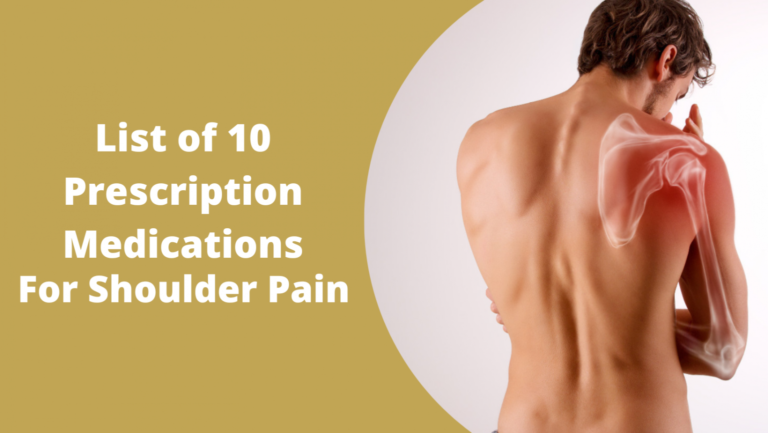
Extensive Shoulder Pain Treatment
The human body\’s shoulder joint has the greatest range of motion. The shoulder\’s extensive range of motion is provided by the rotator cuff, a collection of four muscles and their tendons. Shoulder pain treatment can be possible by a number of medications. Local Pain Management Doctors also prescribe different techniques to treat pain.
Shoulder pain may be brought on by rotator cuff swelling, injury, or bone changes. When you raise your arm above your head or move it in front of or behind your back, you might experience pain. When rotator cuff tendons get caught under the shoulder\’s bony area, shoulder pain is most frequently the result. The tendons swell up or sustain damage. It is also known as bursitis or tendinitis of the rotator cuff.
It’s important to treat both spasticity and muscle spasms. Muscle contracture, which can reduce your range of motion or permanently bend the afflicted joints, can result from severe, persistent spasticity. Additionally, in addition to being painful, muscle spasms may be a symptom of a deeper medical issue.
You can probably cure your muscle spasms or spasticity with rest, physical therapy, drugs, or any combination of the above. Create a care strategy with your doctor that can help you feel better and resume normal activity. Considering taking medication to treat muscle pain and stiffness in the shoulder? Below is a list of common medications used to treat or reduce the symptoms of muscle pain and stiffness in the shoulder, neck, and pelvis.
There are now more options than ever for treating chronic pain if you\’re one of the millions of people who experience it. You have a number of options, from straightforward treatments like an ice pack or heating pad to more involved procedures like surgery.
Medication, both over-the-counter (OTC) and prescription, falls somewhere between these pain management methods. And while taking a few aspirins may be the best method to treat a headache or reduce low back pain, a stronger prescription medication may be required to treat severe, long-lasting pain.
List of Medications For Shoulder Pain Treatment
Following are the drugs listed below.
Antispasmodics
Drugs that relax skeletal muscles from the centre (SMRs). In addition to rest and physical treatment, centrally acting SMRs are utilised to reduce muscle spasms. They may function by having a sedative effect or by obstructing the transmission of pain signals from your nerves to your brain.
These muscle relaxants should only be used for up to two or three weeks. dependable source Longer-term use\’s safety is not yet understood.
Although antispasmodics can be used to treat muscle spasms, research has not demonstrated that they are any more effective than acetaminophen or nonsteroidal anti-inflammatory medications (NSAIDs). Additionally, compared to NSAIDs or acetaminophen, they have higher adverse effects. Drowsiness is one of the more frequent negative effects of centrally acting SMRs.
- dizziness
- headache\\snervousness
- lowered blood pressure upon standing
some medicines include:
- carisoprodol
- chlorzoxazone
- metaxalone
Off Label Medications
Even if the U.S. Food and Medicine Administration has not approved a drug for treating spasticity, doctors may still use it (FDA). Off-label drug use is what this is known as. The following medications can nevertheless aid in reducing spasticity symptoms even though they are not true muscle relaxants.
Benzodiazepines
Sedatives known as benzodiazepines can aid in muscular relaxation. They function by amplifying the actions of specific neurotransmitters, which are substances that transmit signals between your brain cells.
Benzodiazepines include, for instance:
- clonazepam (Klonopin)
- lorazepam (Ativan)
- alprazolam (Xanax)
Gabapentin
Gabapentin (Neurontin) is an anticonvulsant drug to relieve seizures. Additionally, it might lessen the effects of spasticity-related pain reactions. Both brand-name and generic gabapentin are offered. They used for shoulder pain treatment and other muscles as wel

Over-The-Counter Options For Muscle Spasms
OTC medication is advised as the first line of treatment for shoulder pain treatment brought on by ailments. This means that before using prescription drugs, consider over-the-counter remedies. If a person has osteoarthritis and it occasionally hurts more than normal, taking an OTC medication can make sense. The same person, though, might potentially benefit from taking a stronger prescription medication.
Moving on to prescription medication is not always the next logical step if over-the-counter medicines are ineffective at reducing your pain. Drugs may not always be the best route of treatment in many circumstances. Local Pain management doctors suggest different medicines according to the need.
Drugs don\’t have to be used to treat pain. Avoiding specific behaviours, exercising, applying heat or cold, managing weight, using bioelectric currents, complementary and alternative therapies, and having surgery are examples of non-medication treatments.
Nonsteroidal anti-inflammatory medicines (NSAIDs), acetaminophen, or a combination of the two are OTC therapeutic choices. You can get advice from your doctor or pharmacist on OTC medications on shoulder pain treatment.
Medications that are non-steroidal anti-inflammatory (NSAIDs)
NSAIDs function by stopping your body from producing some compounds that bring on pain and inflammation. Both generic and brand-name NSAIDs are offered. Typically, they are sold at counter prices. By prescription, stronger versions are available. NSAIDs are available as pills, capsules, or suspensions for oral use. Children\’s chewable pills are also available. These medications can have nausea and vertigo as side effects. NSAID examples include:
- ibuprofen (Advil, Motrin)
- naproxen (Aleve)
Acetaminophen
It is believed that acetaminophen (Tylenol) works by preventing your body from producing some molecules that cause pain. There are generic and brand-name variants of acetaminophen. It is available as chewable tablets, immediate-release and extended-release oral pills and capsules, oral solutions, and tablets that dissolve in the mouth. Nausea and stomach upset are two of acetaminophen\’s most frequent side effects.
Cannabis
Tetrahydrocannabinol (THC), the molecule responsible for the psychotropic effects of marijuana, has been shown in studies to have the potential to operate as a muscle relaxant.
The fact that cannabis is still illegal to cultivate, supply, and possess in many places limits research on its therapeutic benefits. More research is therefore required to determine whether cannabis or the components it contains can reduce muscle spasticity or muscle spasms.
Services We Provide:
More Resources:
10 Foods And Drinks That Help Pain Relief Joint Pain
Why Do I Have Wrist Pain – Causes & Treatment
Why Chronic Pain Sufferers Don’t Visit Pain Management Doctor?

